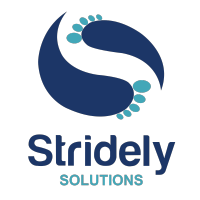A leading marketing company struggling with fragmented data management and inefficiencies turned to Stridely Solutions for a Power BI integration. The client faced challenges with manual data processing, lack of real-time insights, and the inability to meet operational expectations due to siloed infrastructure.
Stridely Solutions implemented a comprehensive data warehouse consolidation strategy, integrating data from multiple sources, including SQL Server, SAP BW, and Microsoft CRM. Power BI was deployed for real-time reporting, predictive analytics, and enhanced data visualization. The solution automated data processing, improved security with Row Level Security, and optimized reporting through cloud-based accessibility.
The integration resulted in real-time dashboards, predictive analytics for better forecasting, reduced operational costs, and improved decision-making capabilities. By transforming their data ecosystem, Stridely Solutions enabled the client to make informed, data-driven decisions while enhancing efficiency and business growth.


